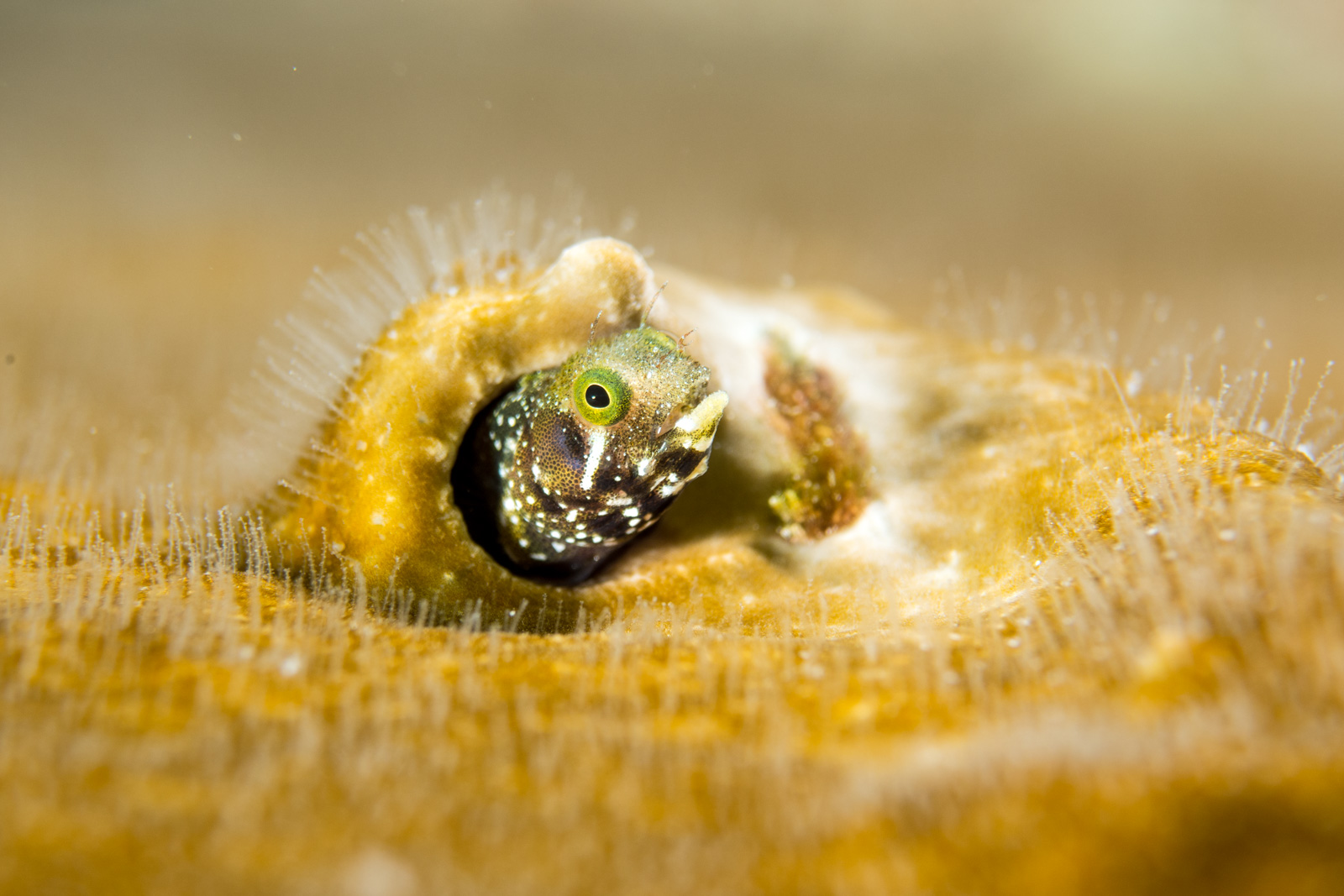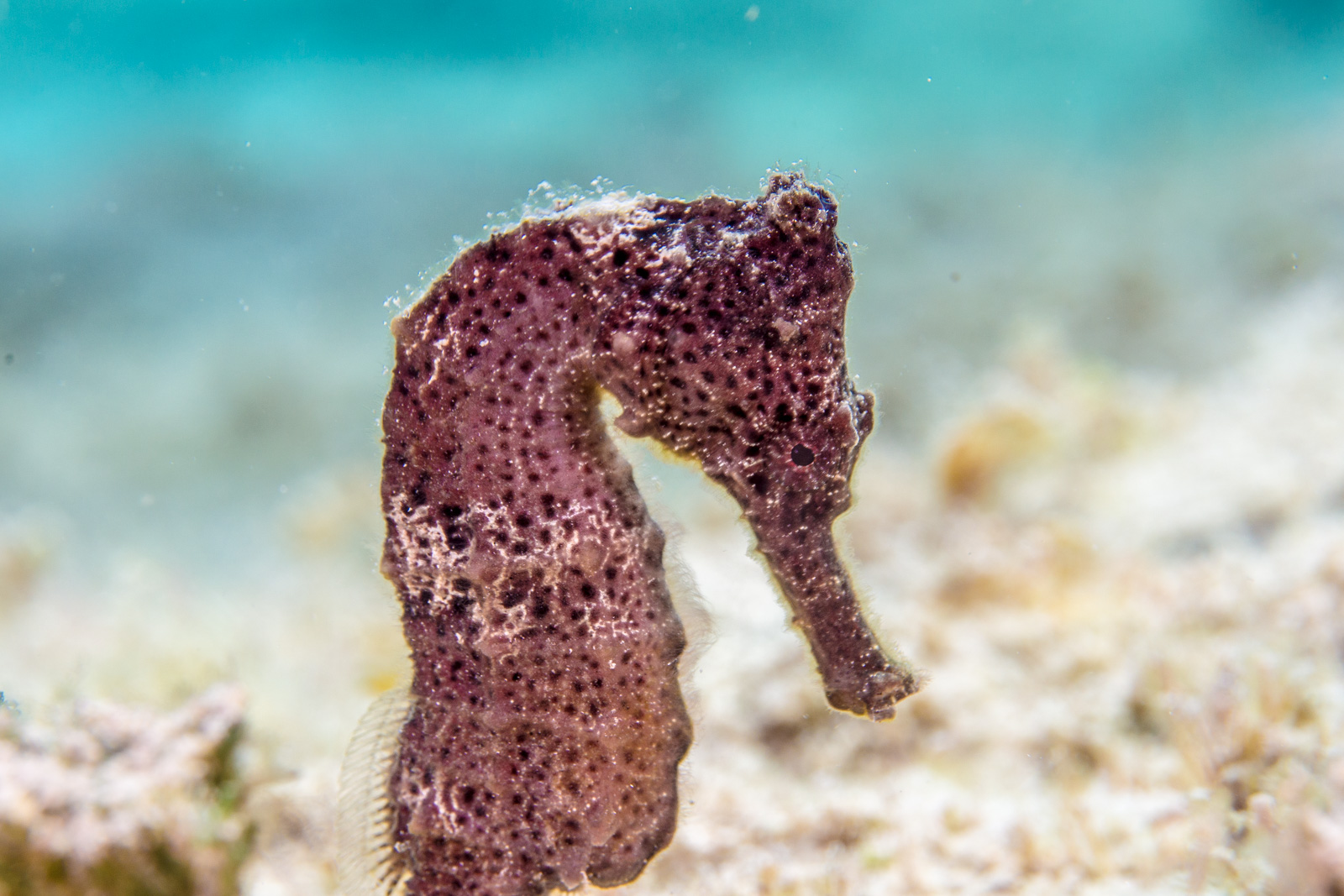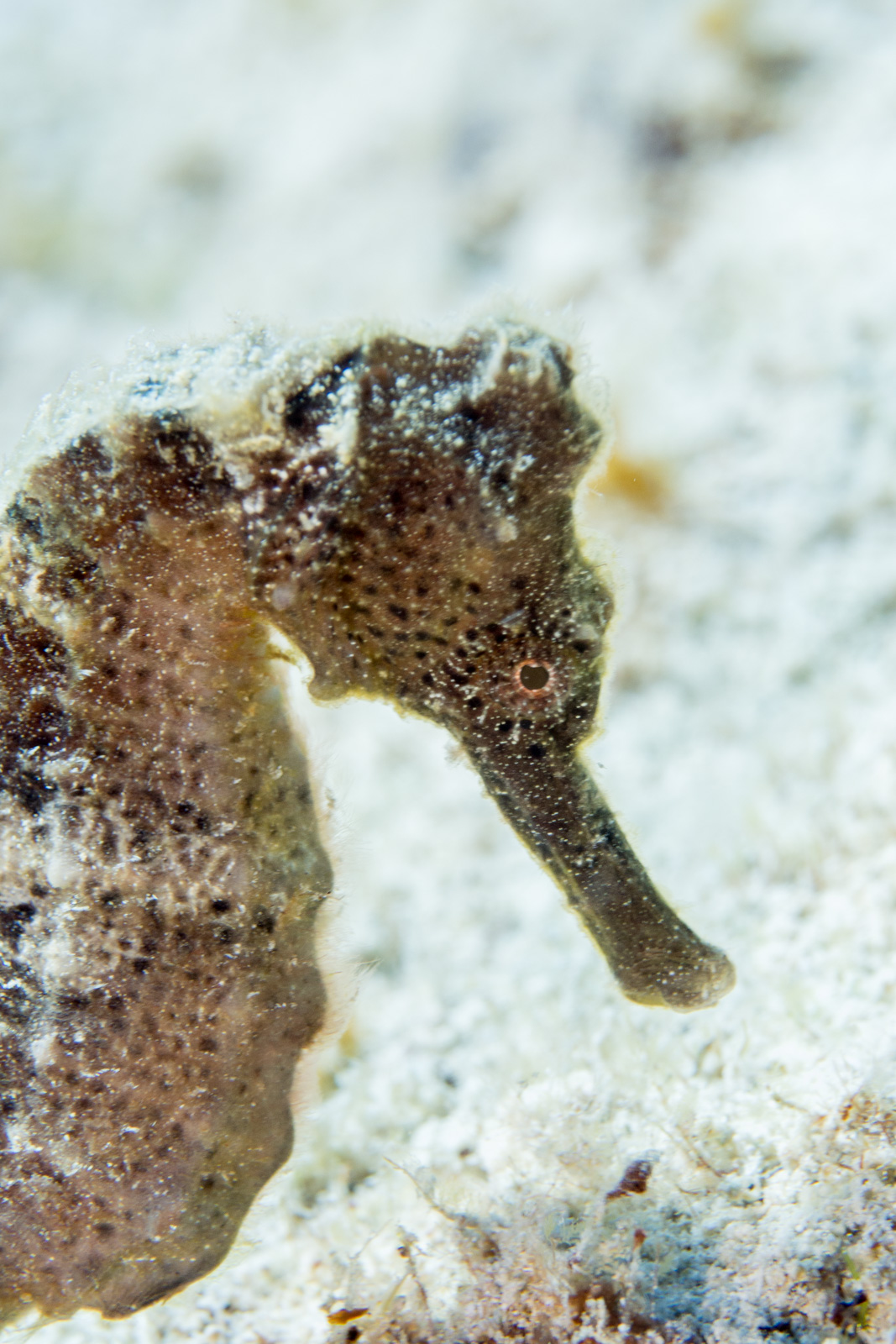Shooting Macro Photos with a Video Light
I get this question a lot. Can you shoot still shots with a video light? The answer is basically – It depends…
As you probably know, there are two types of lighting options for underwater imagery – Strobes (Flash units) and Video Lights (Constant LED lights).
Generally speaking, strobes are intended for still shots and video lights are intended for video. Surely you cannot use strobes for video since they provide only a single flash of light, but you can however use your video light to take photos, at certain conditions.

ISO 500, 1/200, F/6.3
The main problem with using a video light for still shots is that it produces a much weaker output than a strobe. Even a strong video light is about a 20-30 times weaker than the average strobe. Also remember that lights fades rapidly underwater as it travels further away from the source.
Hence, the closer you are to your subject, the less light you need. If you are close enough, you can even use a video light or a dive light for your still shots!
Using a strobe is still the best option, since you don’t have to worry about shutter speed and you know that you always have enough light. When using a video light, the two most important things are:
1. Noticing the Shutter Speed – Sufficient for freezing the subject.
2. Getting enough light in the shot.
Two great reasons for using a video light instead of a strobe:
1. Using a video light would save you quite a lot of battery power which is usually lost on the pop-up flash triggering your strobes.
2. If you want to get a light snoot-like effect, you can use your dive light, or video light on Spot mode. This actually turns out very nice and would be more available than a snoot for your strobe.


Moving on to….
Technique
When taking photos with a video light, it’s best to shoot on Manual. Make sure you set your quality to RAW. You should be doing this anyway, but here it’s even more important! This can help you get even more exposure in post processing.
Set your shutter speed at a convenient 1/200 or higher in order to freeze your subject.
Bump up your ISO to 1000+, in order to get more light in the shot.
Play around with your aperture to control the light.
You want to keep your aperture fairly small for close-up or macro shots, since the depth of field becomes very shallow in these shots. However, if you’re not getting enough light, or if you’re feeling lucky and want to try and grab just the eye of the critter in focus, you can risk opening your aperture and getting more valuable light.
I would recommend shooting on continuous mode. You will have more chance of getting one shot with spot-on focus if you’re taking multiple shots every try. Especially for tight macro shots.
Practice this technique using both spot mode and flood. Spot is often very strong and can produce amazing macro lighting. It’s great for tiny subjects.


Conclusion
If you are a macro shooter and want to save on a strobe, you can definitely try using your dive light / video light as an alternative. As long as you maintain a proper technique, you should get some very nice results.
This method works for macro shots or very close close-ups. If you are attempting wider / further shots, you will probably be disappointed.
Good luck and feel free to send me your test shots to ran@housingcamera.com. I’d love to see and comment!
Dive Safe and mind your fins!
Gear used for this guide: Olympus E-M5 camera with Zuiko 60mm Macro lens, Aquatica +10 Macro lens, YS-D1 & YS-01 strobes and I-Torch Venom 35s video light.
- Native Lenses vs. Wet Lenses for Underwater Photography – December 20, 2023
- The Complete Guide to Practicing at Home for Underwater Photographers – October 4, 2023
- Best Strobe for Underwater – The Ultimate Strobe Guide (Updated!) – June 29, 2023

 CAD
CAD
1 comment
Love it, thanks so much for the tips. I’m shooting marci video with a set shutter of 125 for 60fps on the GH5 60mm macro lens any tips for subjects of this size?